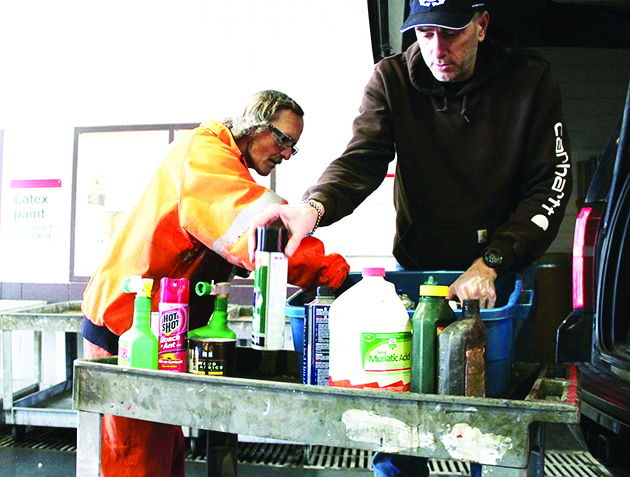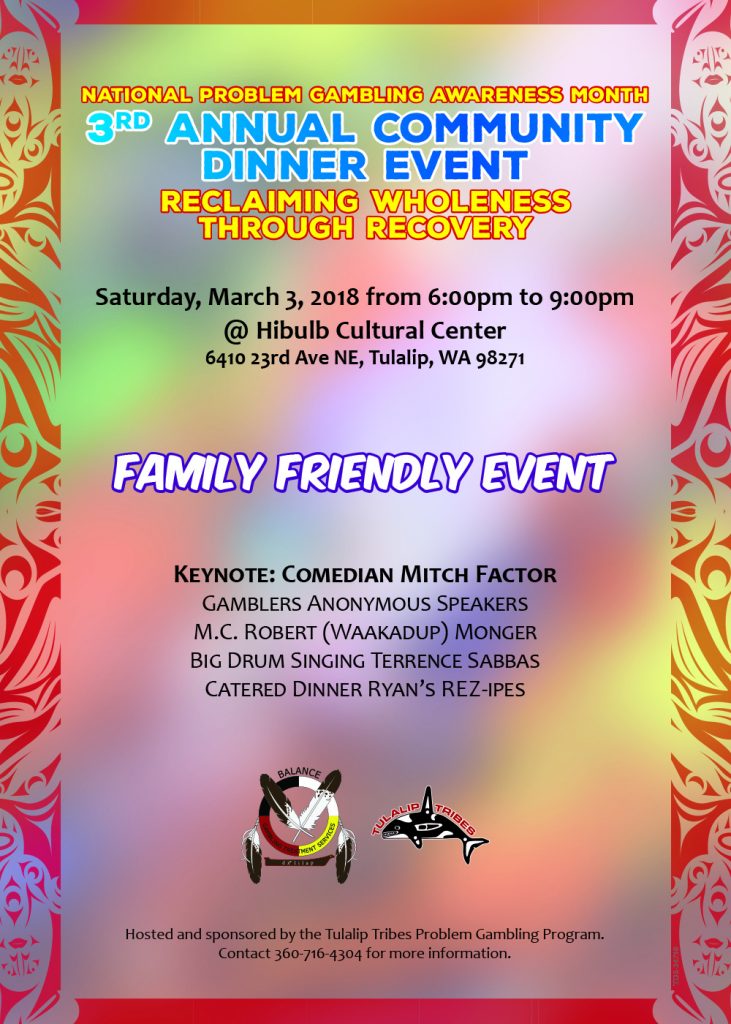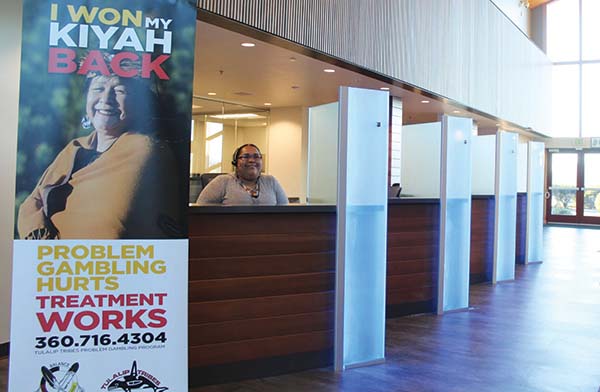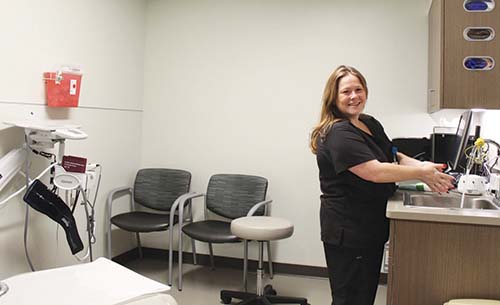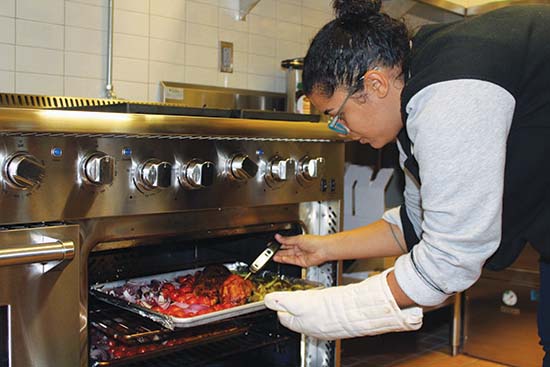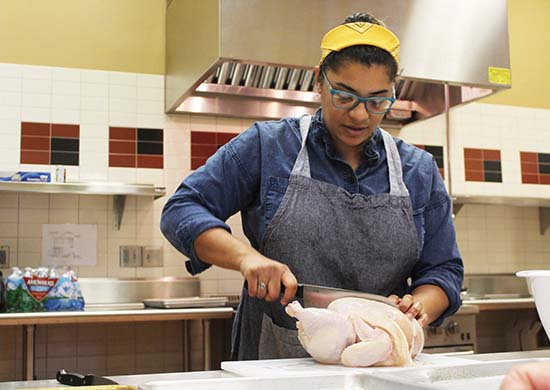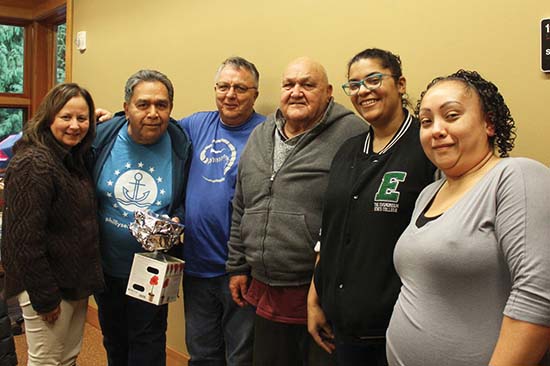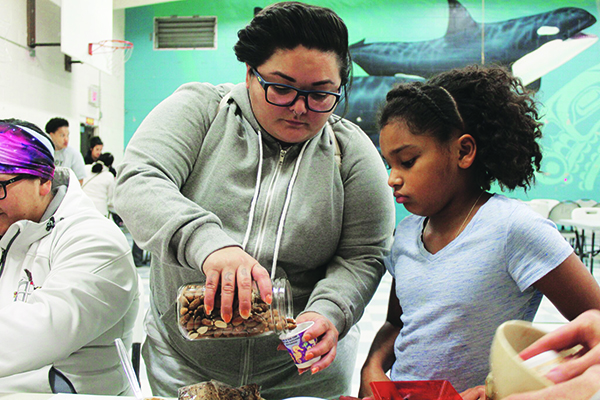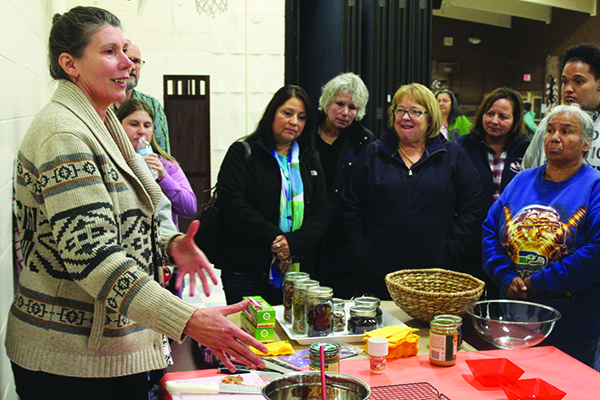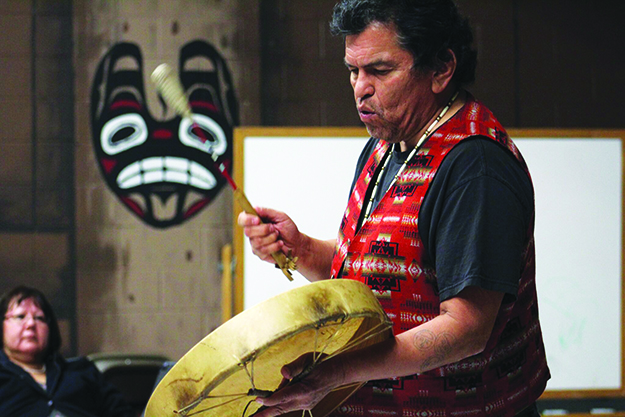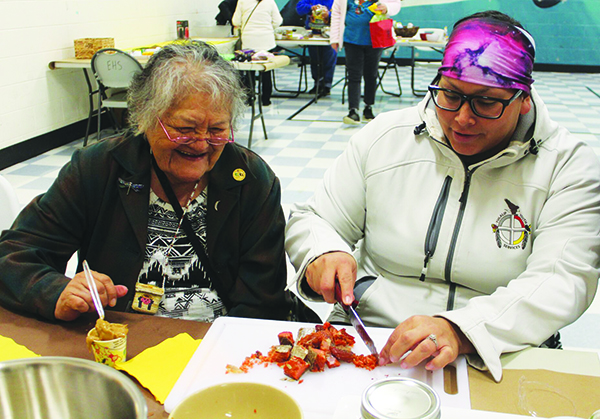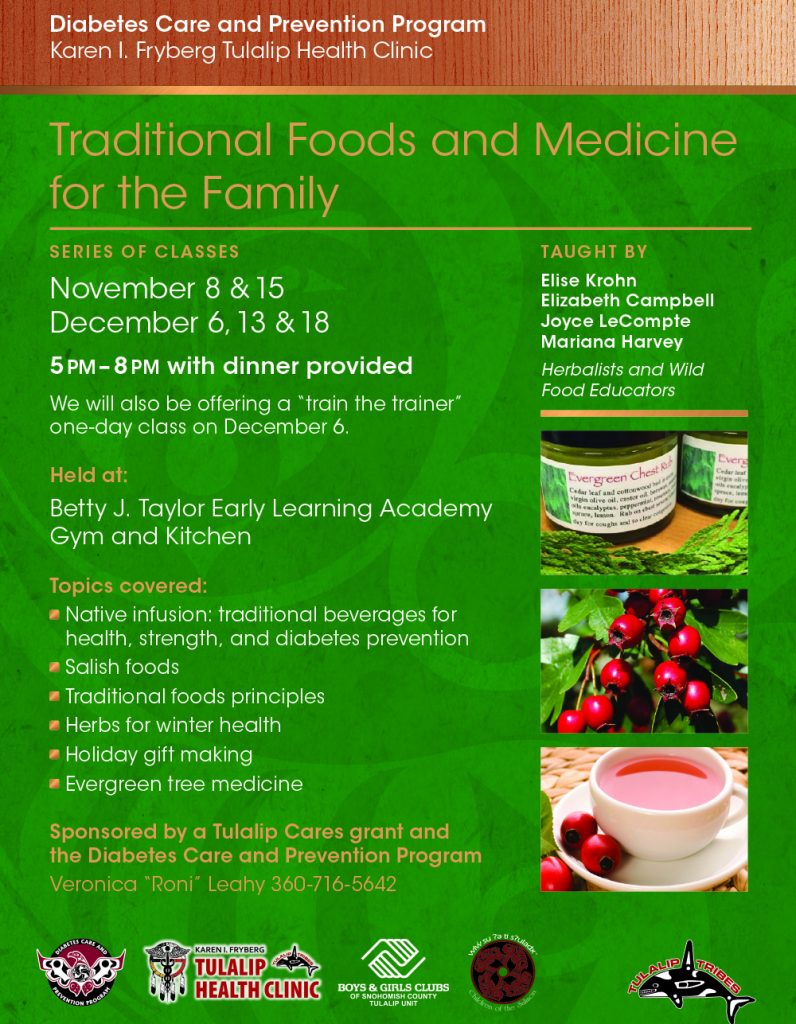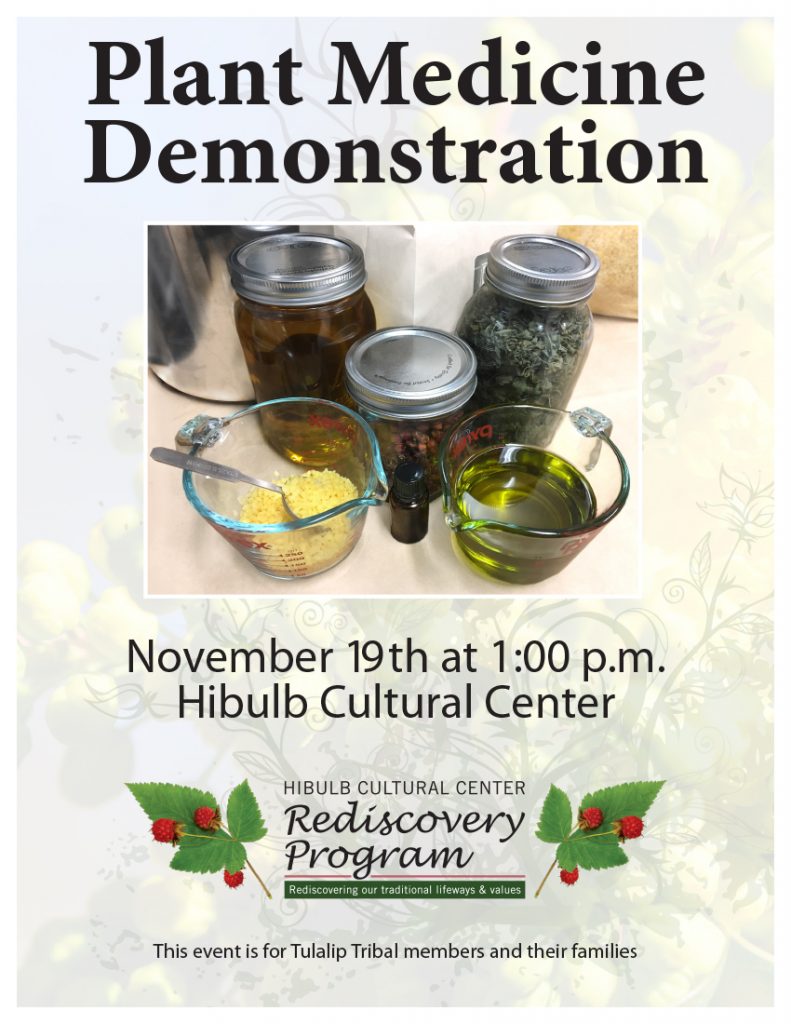Category: Health
Snohomish County provides free Household Hazardous Waste disposal in Everett
By Kalvin Valdillez, Tulalip News
According to the Environmental Protection Agency (EPA), the average U.S. household generates more than twenty pounds of household hazardous waste (HHW) each year for an estimated total of 530,000 tons nationally. HHW items include products for your car, such as anti-freeze, motor oil and brake fluid as well as products around the house, like fluorescent light bulbs, paint, cleaning products and pesticides. These items are often accompanied by warning labels that read caution flammable, poison or corrosive. Improper disposal of these items, like pouring excess paint, oil or chemicals down the drain, in the trash or off the side of the road, are leading to serious concerns for Mother Earth and all of her inhabitants.
“For environmental pollution prevention purposes, trying to control storm water pollutants or toxins in the environment is paramount to folks who are interested in protecting salmon,” states Tulalip Planning Code Enforcement Officer, David Nellis. “It’s very important that we are working to prevent toxins like paint, spent fuels and these types of things from entering storm water runoff. When it rains, it hits paint that was spilled on the ground and the paint rushes off and gets into the creek and then flows downstream and salmon eggs get that covered on them. It’s either causing damage to the salmon eggs by affecting their DNA or killing them.”
At the turn of the 21st century, the EPA conducted a study which showed that pharmaceuticals and personal health care products (PPCP) in bodies of water were becoming an ‘emerging concern’ for fish. Overtime, the PPCPs bio-accumulate in the fish’s tissue, which can lead to endocrine system disruption causing reproductive and behavioral problems for the fish. Though that particular study did not focus on HHW like motor oil and paint thinner, it did show that the chemicals eventually work their way back up the food chain and now pose a problem for people.
“You can only eat an x amount of salmon and tuna now because of mercury; we have mercury in our light bulbs,” David explains. “These are called PBTs, or persistent bio-accumulative toxins, that the EPA tries to keep out of the environment. Some of them are in paints, light bulbs, and pesticides – a lot of these things we spray outdoors or spill accidentally. When they get into a body of water, they get into our body by getting into the bodies of the things we eat. And when that accumulates it can cause problems.
“The EPA states if you’re pregnant, you should only eat one meal of tuna a month,” he continues. “Because the level of mercury, it can interfere with the central nervous system development in children ranging from learning disabilities, to severe neurological damage to death being the worst case. What have we done? This is healthy food. We should be able to eat fish every day. All these things are impacted by things we put in the environment. Every salmon egg that dies is a salmon that won’t be smoking on the grill and providing food for ceremonies. Every one we can save, by not allowing pollution in the environment, will benefit our society. So, how can we make it better? By recycling and disposing these harmful products in a safe and proper way.”

Snohomish County provides free disposal of HHW products for their residents at the Household Hazardous Waste Drop-Off Station in Everett. The station accepts a variety of HHW products and is located at 3434 McDougall Avenue, off Broadway, a block adjacent to the Brown Bear Car Wash. The station collects and separates HHW to be recycled, consolidated and disposed of safely. They will also accept hazardous waste from small businesses that qualify as a small quantity generator, by appointment and for a fee.
“We take household items,” explains Ginger Swint, Moderate Risk Waste Specialist at the HHW Drop-Off Station. “Unwanted cleaners, pesticides, automotive, florescent lamps, and all batteries including car batteries. We don’t take sharps, radioactives, explosives, ammunition or empty containers. All the fluorescent [bulbs] are taken down to Seattle where they capture the mercury and phosphate, and the glass and everything else is recycled. I think this station is essential because it keeps [HHW] out of the waterways and away from children. It gives us an opportunity as a community to dispose of it properly instead of throwing it in the garbage.”
“They do chemical manipulation and restore it, reuse it in another product or dispose of it entirely in a way that doesn’t negatively affect our health and resources,” says David. “We can take some these spent fuels like for boat engines, you put additives in it and after a year it’s not good anymore, it kind of turns into lacquer. You can take all this stuff and take it to the household hazardous waste disposal site and give it to them. If you’re a private home owner they’ll take it for free and that gets it out of our waste streams. You’re essentially taking this massive pile of stuff that’s causing our demise – the demise of salmon, shellfish and poisoning people, and making it a little less than before. It’s more consolidated and compact. If we can try to remove some of these from the environment, then we can curb some of these man made problems.”
The Household Hazardous Waste Drop-Off Station is open Wednesday through Saturday between the hours of 7:30 a.m. and 4:00 p.m. To view a complete list of what the drop-off station accepts and does not accept please visit www.SnoCo.org
Contest winner Announced for National Problem Gambling Month Design
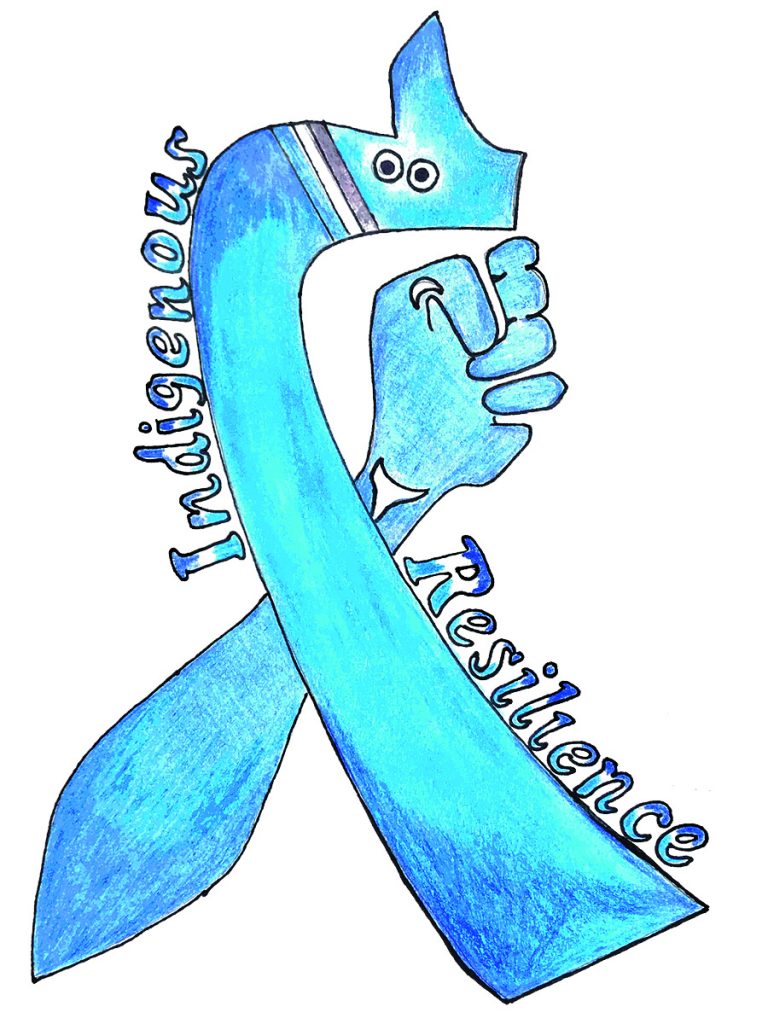
By Kalvin Valdillez, Tulalip News
Tulalip Family Services held a contest during the month of January for the youth of the community. The contest encouraged kids to explore their creative minds to create a t-shirt design for the upcoming National Problem Gambling Awareness Month in March. Open to kids between the ages of twelve and eighteen, the theme for the contest was Reclaiming Wholeness Through Recovery. Family Services’ Problem Gambling Program has several special events planned next month to help bring awareness and education to the Tulalip community about gambling addiction.
The Problem Gambling Program often collaborates with the Tulalip Youth Council to brainstorm ideas for upcoming events. The t-shirt contest idea was so popular, the council spent an extended amount of time, excitedly discussing ideas and debating whether the design should be created on computer or by hand.
“We went to the Youth Council and asked for their input on awareness month and what they want to see, because we want them to know that they’re heard and that their voices mean something. We want them to know that they’re included in this process because a lot of times we hear how gambling, whether it’s them personally or a family member, this disease is impacting their lives,” states Robin Johnson, Problem Gambling Counselor.
Family Services accepted art designs through January 30th and received several submissions. On the first of February, young Tulalip tribal member Jaycenta Miles-Gilford was informed that her art was picked as the winning design. The Problem Gambling Program will feature her art on t-shirts that will be handed-out at all of the upcoming events during National Problem Gambling Awareness Month.
“It’s the ribbon of awareness,” states Robin. “And the color for National Problem Gambling Month is blue. She also incorporated the cultural aspect with the canoe and paddle. And I love the message, Indigenous Resilience, that’s exactly what it’s all about, not giving in and fighting back. The young lady who won is going to be honored at our Annual Community Dinner and will be presented with a three-hundred dollar Wal-Mart gift card.”
The program aims to provide as much education as possible about the addiction to the Tulalip Youth. Sarah Sense-Wilson, Tulalip Problem Gambling Coordinator, believes that many times the youth become gambling addicts because they find it taboo and thrilling because of the risk and reward, as well as exciting when competition is involved which is extremely popular in the sports realm.
“March is identified as National Problem Gambling Month because of March Madness and the mainstream promoting of gambling during the entire month,” Sarah explained. “It’s really a campaign to promote awareness. Three years ago, we initiated the campaign in the tribal community here in Tulalip. We really want to show people that this is a real illness, this is an addiction and that it’s something that affects tribal communities just like it affects non-tribal communities. And given the proximity of the casino and other gambling establishments, we want to let people know that there is treatment and that treatment does works. We’re available and accessible to everyone.”
Sarah explained that when the Problem Gambling Program was in early development, they chose to focus on two age groups, the elders and the youth, who are statistically more vulnerable to the disease. For the elders, she attributes the addiction to an excess amount of time due to retirement, as well as an escape from both physical and emotional pain caused by grief and loss. Studies conducted by the American Society of Addiction Medicine show that gambling causes a chemical imbalance of neurotransmitters in the brain, which seemingly appear to ‘numb’ the pain receptors, when in actuality the gamblers found a way to temporarily mute their problems and relieve their pain.
“We wanted to do community outreach, supporting these groups so they know that we’re a resource,” states Sarah. “If you want to come and learn more or see about setting up an intervention for a family member, we’re here to offer support, education, materials and anything we can do to help promote the wellness of our community. We strongly encourage people to get their families involved because statistics and data show that the more the family is involved – spouses, extended family, friends and the important people in their life – then the likeliness of that individual getting well increases dramatically.”
The upcoming National Problem Gambling Awareness Month events include the 3rd Annual National Problem Gambling Month Community Dinner on March 3rd at the Hibulb Cultural Center from 6:00 p.m. to 9:00 p.m., a community movie night on March 17th at the Boys and Girls Club beginning at 5:00 p.m. as well as the Annual Honoring Elders Luncheon at the Tulalip Senior Center on March 21st from 11:00 a.m. to 2:00 p.m.
For more information, please contact Tulalip Family Services at (360) 716-4304.
Problem Gambling 3rd Annual Community Dinner Event, March 3
Make your home safer by properly disposing unused/expired drugs and sharps
By Kelvin Lee, Tulalip Clinical Pharmacy, Pharmacy Director
I am pleased to announce the new Expired/Unused Drugs and Sharps disposal services at the Tulalip Clinical Pharmacy. We installed two secured aluminum kiosks inside the pharmacy consultation area to take unused/expired drugs and used sharps from our patients at no charge ($5 disposal fee for non-customers). We hope the new service will help remove these hazardous items from your homes and prevent unnecessary accidents from happening.
Patients who wish to use this service please ask for assistance at the pharmacy counter before putting any disposal items into the kiosks. To ensure proper disposal, we appreciate your cooperation in adhering to the following policies:
Expired/unused drug disposal kiosk
Acceptable disposal items:
- unused or expired prescription medications (including controlled substances)
- over-the counter medications
- pet medications
Unacceptable disposal items:
- Illegal drugs
- Inhalers
- Lotions/liquids
- Aerosol Cans
- Needles
- Hydrogen Peroxide
All drugs must be in their original containers/vials. Loose pills cannot be put into the kiosk.
Sharps return kiosk
All sharps must be disposed in an approved sharps container that can fit into the chute opening of the kiosk (8” X 14.25” X 11”), approx. 8.2 Quarts. Tulalip Clinical Pharmacy will not accept loose sharps, unapproved or oversized sharps containers.
Taking care of patients as a whole, Clinic integrates to one Tulalip health system
By Kalvin Valdillez, Tulalip News
Tulalip community members who pass by the Karen I. Health Clinic on their daily commute may have noticed recent construction occurring at the front of the building. Over the past few months, many people have seen a small, new addition being built at the clinic that will serve as a conference room to its faculty. What many may not know, however, is the entire clinic also received renovations. Unless you have recently received care at the health center, you are in for a big surprise upon stepping into the clinic.
One of the first things you may notice is how clutter-free the lobby is. Where once stood a totem pole is now a spacious open area where patients can register at one of the five new check-in stations.
“It has that beautiful longhouse look with high ceilings, made of cedar, which helps with the acoustics,” explains Tulalip Health System Administrator, Jim Steinrick. “Our focus with the lobby was to make it welcoming, warm and cleaned up. There are four new check-in areas with lighted panels that go off and on. There will be a sign that says ‘if you see a blue light come on up and we’ll take care of you’. Around the corner we also have our ADA compliant, lower counter check-in area for people with wheelchairs.”
The idea of the check-in stations came about upon a visit to the Monroe Providence Clinic. According to Tulalip Health Information Manager, Jennie Fryberg, the entire remodel initially began with a need to centralize check-ins. Prior to the renovations, patients would often become frustrated after waiting in line at the wrong check-in stations. Now patients can check-in at any of the new stations for any services at the clinic.
A few short months ago, once you were finally checked-in at the clinic, the waiting game began. The Health Clinic made changes within the facility that are sure to cut that wait time significantly, beginning with four new healing rooms for acute care.
“We separated the acute walk-in care from scheduled patients,” says Jim. “So, if someone comes in and needs to be triaged, the nurse will bring them into one of the four new healing rooms.”
“Before we were tight on rooms because the scheduled appointments took all the healing rooms,” added Jennie. “We have two new acute care doctors so we can get patients in, out and through faster so they aren’t having to wait as long.”
The new healing rooms feature state-of-the-art equipment as well as hands-free lighting and water faucets. The previous healing rooms also received a make-over with fresh paint and hardwood floors, as did the hallways. The clinic placed a referral station near the healing rooms, by the entryway to the lobby, so referral specialists can assist patients on their way out.
The health clinic has also gone paperless, converting all of their patient’s health records to electronic format in a system that is able to communicate with both the Everett Clinic and Providence. The decision helped create a lot more space during reconstruction resulting in the expansion of the clinic’s lab and dental areas. The lab received new equipment and dental received three new chairs, which will be used to prep patients before seeing the dentist.
Another space enhancer is the consolidation of the doctors and nurses workspace from individual offices to an open work area known as the hub.
“The hub will have doctors and nurses all together, so everyone’s on the same page” Jennie explains. “We did away with all the doctor’s offices. We wanted to open it up so the whole team can be together and communicate more efficiently.”
Inside the hub is a large flat screen TV that displays the clinic’s new Versus Tracking System.
“When our patients check in at the desk, they’ll receive a sensor to carry with them,” says Jim. “We’ll have a big screen where we’ll be able to tell where they are. So if they’re waiting in one place too long, we can check on them and let them know we’ll be right with them, instead of letting someone sit and wait for twenty minutes.”
During the brief wait after checking in or after receiving care, the patient can visit any of the services that are conveniently located in the lobby including Alternate Resources for Elders, Everett Optometry and two additional referral desks.
In an effort to treat the whole patient and provide wrap around care, the Health Clinic is welcoming eight new behavioral health specialists to the team. The specialist will be readily available to meet with individuals seeking mental health care.
“When we work as a team on a patient we focus on the whole body, so teeth, eyes, mind, body and spirit,” Jim explains. “We can have the specialist meet with the patients while they’re here and take care of the whole person. We’re working on destigmatizing mental health. Some people say it’s too personal, but it’s like dental. The old adage is the mouth is part of the body, well so is the mind.”
The conference room that many saw constructed over the Fall was a much needed addition. In previous years, large meetings would often take place in the employee break room, which received a makeover as well.
“We’ve integrated to a health system now,” states Jim. “We used to be the clinic, behavioral health and recovery, and chemical dependency. Now we’re one health system and part of the same health team. I want to make sure that our Tulalip tribal members know that we’re doing this so we can provide better continuity of care, so we’re more seamless. And also that this is a good place to come and when they come here, they will get good customer service and good quality clinical care. I think there are some misconceptions out there about the care that’s given here, once people are in here, they will really see the changes we made.”
Jennie adds, “As a Tulalip health system, our whole purpose is to take care of the patient as a whole and to smoothly get people in and out easier. Its good changes that were doing and it’s to better our services. So we’re hoping to get some of our Tulalip tribal members back here to see the changes that we are making for the betterment of our community.”
Be sure to visit the newly remodeled Health Clinic and for more information please contact (360) 716-4511.
Cooking Together with Brit Reed
By Kalvin Valdillez, Tulalip News
The Tulalip Diabetes Care and Prevention program is working to make Tulalip a healthier community. With diabetes prevalent in Native communities throughout the United States, many families feel a need to change their die,t but don’t know where to begin, After a day’s hard work, it’s far easier to order in or carryout than to hit the stove and whip up a meal. The Diabetes rogram knows that adjusting to a healthy diet can be an overwhelming task, therefore, the program has created a series of cooking classes, hosted twice a week at the Hibulb Cultural Center. The exciting hands-on learning experience teaches community members how to prepare healthy, diabetic friendly, easy-to-make meals.
The Diabetes program called upon Tulalip community member Brit Reed to lead the series of classes. As a member of the Choctaw Nation, Brit found her passion for cooking at a young age while assisting her aunt in the kitchen. But it wasn’t until she received an assignment while working on her Master’s Degree at Evergreen State College, that she revisited her passion. For her assignment, she created the Facebook group page, Food Sovereignty is Tribal Sovereignty, where members of the tribal community can discuss traditional foods and share stories and recipes with one another. Brit continued to explore traditional foods and became inspired by Native cooks, such as the Sioux Chef, to attend culinary school and enrolled at the Seattle Culinary Academy. Most recently Brit became a member of I-Collective, a non-profit organization consisting of Indigenous chefs, activists, herbalist, and seed and knowledge keepers from across the nation.
“I grew up in a family where it was really important to cook at home,” Brit explains. “My parents were really strict about us eating around a table together, every single day, and having dinner. Even though I kind of hated that as a kid, when I grew up I really grew to appreciate that; I actually think I was initially inspired by that. Later on, I started working with my auntie in Nevada, cooking for our family and our community, learning about traditional foods and the way it can help people get better mentally, physically and spiritually.
“I started researching more about traditional foods, food sovereignty and food security,” she continues. “And also our history as Native Peoples and how being separated from our traditional foods has affected our health negatively. And how coming back to those healthier foods and traditional foods has helped address things like diabetes, hypertension and all those different things that now plague our communities.”
During the Cooking Together classes, community members learn new recipes, experiment with new foods and seasonings, and also learn new techniques such as knife skills. Once the meals are prepared, students enjoy their food creations together while sharing stories and exchanging life advice. The classes are open to the entire community and frequent attendees include the Tulalip Wisdom Warriors who provide both valuable insight and loads of laughs to each class.
“The Wisdom Warriors give us good direction, they’re kind of like our elders advisory group,” says Diabetes Care and Prevention Coordinator, Veronica ‘Roni’ Leahy. “They’re invested in what we’re doing because they believe in it. We’re creating memories with the elders. While they’re at these classes they share their health issues and talk to each other about how they’ve overcome it, and that’s where the healing is.”
The classes currently take place on Saturdays and Mondays through December and will be taking a brief holiday break before returning in February of 2018. The Diabetes Program recently dedicated the Monday classes to making a variety of soups from scratch and will be donating the food to the homeless shelter as well as the Senior Center.
“It’s a good opportunity for us to learn the basics in soup-making, like how to make a good healthy stock rather than using a box,” explains Roni. “Because we’re going to be making such large quantities, instead of giving the food to people who come to event, we decided to do more outreach in the community. Even though they aren’t at the classes with us, they are in our hearts and we’re thinking of them. We want to share the food with them and share that goodness that comes from the kitchen.”
So far, the students have enjoyed many delicious dinners together including chicken wings, roasted lemon chicken and BBQ pork loin accompanied by some scrumptious sides such as beet salad, roasted Brussels sprouts and roasted squash. Future requests from the Wisdom Warriors include seafood like clam chowder, geoduck and salmon.
“We try to make foods that are healthy, but we really want to cook foods that are exciting and also happen to be healthy and colorful,” Brit states. “I think it’s important to get people familiar with different ingredients that are readily available and are healthy; and also with the techniques on how to be able to cook in the kitchen, so they feel they can be creative and they actually enjoy being in the kitchen. I definitely want to incorporate more traditional ingredients in things that we are able to easily access from the grocery stores. I would really love to hear what the community is interested in learning because I’m here to help serve the community and want to teach what they want to learn about.”
The Diabetes Program also works with Tulalip TERO to hire Tulalip tribal cooks to assist Brit during the classes.
Help Chef Brit Reed close out the year by joining her last two classes of 2017 on Saturday December 9 and Monday December 11 from 12:00 p.m. to 4:00 p.m. and be sure to keep an eye out for the upcoming Cooking Together classes slated for a fresh start in February of next year. For more information, please contact the Diabetes Prevention and Care Program at (360) 716-5642.
Traditional foods for a healthy community
By Kalvin Valdillez, Tulalip News
On the evening of Wednesday November 8, the Betty J. Taylor Early Learning Academy Gym was filled with excited Tulalip community members as they eagerly waited for the Traditional Foods and Medicine for the Family class to begin. The class is the second in a series of six that is hosted by the Tulalip Diabetes Prevention and Care Program. During the course of each three-hour class, attendees learn the importance of traditional Coast Salish foods such as deer, elk, berries, tea, salmon and shellfish; and also the uses of a variety of medicinal plants. The Diabetes Program assembled an all-star team to present these teachings to the people of Tulalip.
“We were really just looking for the right educators to come work with us, teachers who have the same diabetes focus but have an alternative approach to traditional types of diabetic care,” explains Diabetes Care and Prevention Coordinator, Veronica ‘Roni’ Leahy. “We know Elise Krohn, she used to work at Northwest Indian College and she worked with the Diabetes Prevention Program. A lot of community members are familiar with Elise as well as Valarie Seacrest, they started a new company called GRuB – Garden Raised Bounty. We hired her and her team to do a series of six classes for us. They touch on diabetes, but they also touch on the traditional aspect of food and the health of those foods.”
The Diabetes Program brings in the Lushootseed Department to start each class with a traditional Tulalip song and blessing. Community members are treated to a meal catered by local tribal-member owned business, Ryan’s Rez-ipes. While preparing the meals for each class, Ryan caters the menu to the class attendees who are living with diabetes. Per Roni’s request, Ryan created three homemade salad dressings, low-sugar and diabetic friendly, which were an instant crowd favorite.
While enjoying the healthy dinner, all eyes turn to Roger Fernandez, a storyteller from the Jamestown S’Klallam Tribe. Roger is known throughout the Northwest tribal communities for providing thought provoking stories and has also been featured at Hibulb Cultural Center. During the classes, Roger shares a handful of traditional stories which emphasize the ancestral teachings in regards to the traditional Coast Salish diet.
Following the meal, attendees have the option to indulge in dessert, such as mixed berries, while the class continues with a lesson presented by the GRuB team. Participants learn about the nutritional aspect of the day’s food and compare the modern diet with the traditional diet. The Diabetes Program ends each class with an interactive cooking demonstration in which attendees put their newly acquired knowledge to use by creating a snack and/or remedy to take home, such as herbal infused beverages, pemmican, tea and herbal infused honey. In addition to the food, including leftover Ryan’s Rez-ipes and homemade snacks, the Diabetes Program also sends a select few home with gift bags.
“The giveaways are always cooking related or health food related,” says Roni. “We weave everything together, it’s our health and it’s all connected. And part of that is teaching about feeding the seven generations; learning to live with the spirit, diversifying your diet, eating more plants, traditional and wild foods, how we cook and eat with good intention and giving back to the land. They’re not aspects a western medical clinic, even in our surrounding communities, would be teaching about. That’s what makes Tulalip and Native communities so special. We have the opportunity to talk about the land, the environment and the water. It’s really worth it to bring the people together There were four generations here tonight and that’s a really good thing.”
Upcoming Traditional Foods and Medicine for the Family classes will be held December 6, 13 and 18 from 5:00 p.m. to 8:00 p.m. The December 6th class is an all-day ‘train the trainer’ event where the Diabetes Program will be sharing the Traditional Foods curriculum with the teachers and instructors of the community. For more information, please contact the Diabetes Prevention and Care Program at (360) 716-5642.

